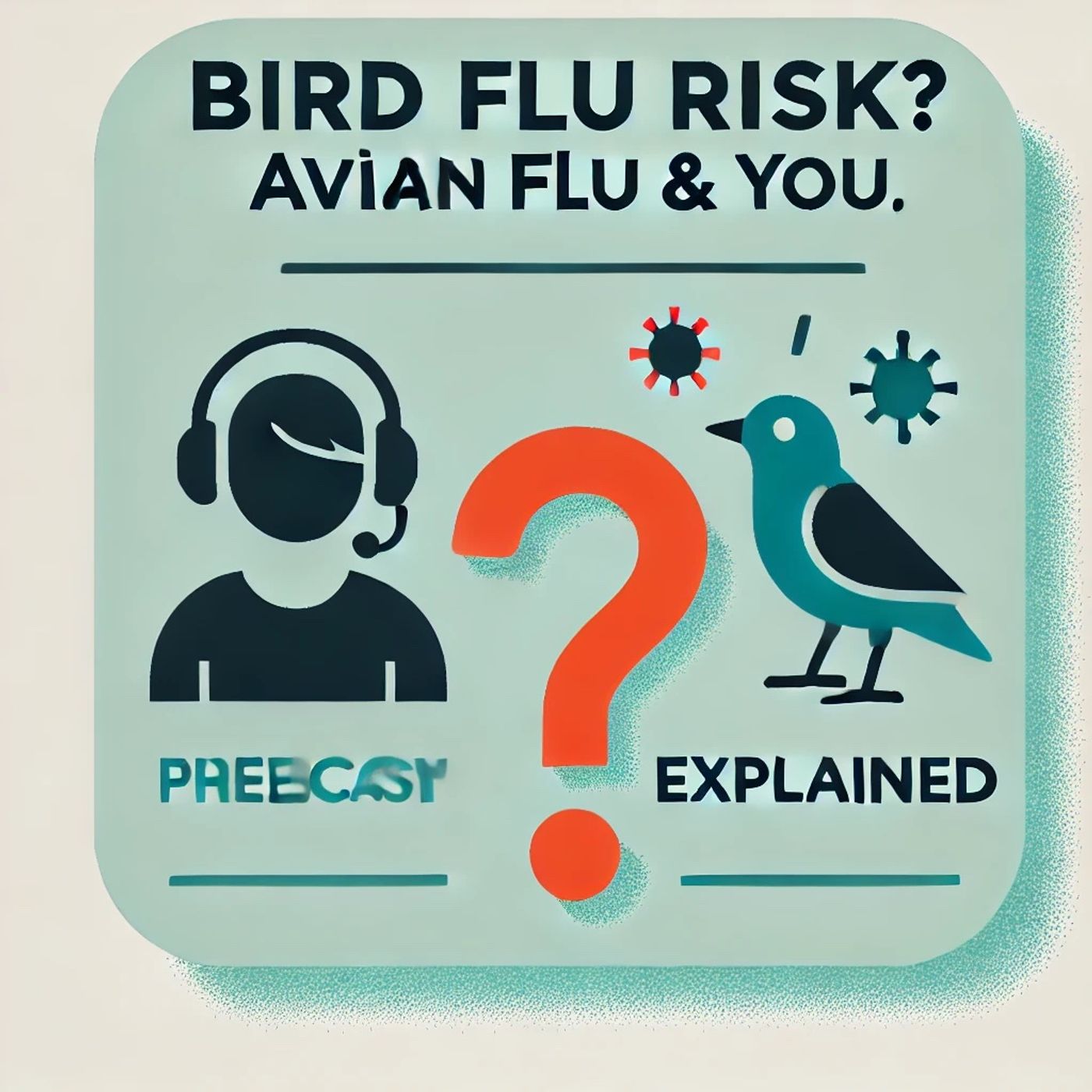Podcast Episode Details
Back to Podcast Episodes
Bird Flu 2025: Your Essential Guide to Avian Influenza Risk Levels and Personal Protection Strategies
Welcome to Bird Flu Risk? Avian Flu & You, Explained—the podcast that breaks down what you need to know about avian influenza risk today. Whether you work with animals, live near a poultry farm, or just want to know how concerned you really should be, let’s walk through your personal risk assessment together.
First, let’s understand the current situation. According to the World Health Organization, Food and Agriculture Organization, and World Organisation for Animal Health, as of April 2025, the global public health risk of avian influenza—from viruses like H5N1—remains low overall. Most infections happen in people who have direct, close contact with infected animals or contaminated environments. Though occasional human cases are reported, especially among people in high-risk jobs, the impact on the general public is considered minor at this time.
Who is at greater risk? CDC data highlights that poultry workers, dairy workers, and those handling raw animal products are most exposed. If you work in a commercial poultry operation, a slaughterhouse, or transport live birds, your risk is higher due to close, repeated contact with potentially infected animals. Backyard flock owners, bird market workers, veterinarians, and hunters who handle wild birds also face elevated risk. Children typically have the lowest risk, while older adults, due to age-related immune decline, may have a slightly increased risk—especially if they also have underlying health issues.
Location matters, too. If you live in regions with active bird flu outbreaks in poultry or wild birds, your potential risk goes up. Urban residents with no bird or animal contact generally have minimal risk, while rural residents with backyard birds should stay informed on local outbreaks and biosecurity headlines.
Let’s walk through a personalized “risk calculator” narrative:
Scenario 1: If you’re a city dweller with no contact with poultry or wild birds, and no health problems, your risk is extremely low. Scenario 2: If you’re a healthy adult helping on your family’s small poultry farm, and there’s a local outbreak, you’re at moderately increased risk. Wear protective gear and practice good hygiene. Scenario 3: If you’re an older adult with chronic lung disease who works in a poultry plant during an outbreak, your risk is higher—take precautions and consider discussing with your doctor.
For high-risk listeners—especially those who handle live birds, raw animal products, or care for sick animals—the key is protective equipment. CDC emphasizes gloves, masks, eye protection, and thorough handwashing. Stay up to date on animal health reports and consult your employer or health provider about special protections. If you develop flu-like symptoms after animal exposure, seek prompt care.
And what about everyone else? If you don’t work with birds or live near an outbreak, your day-to-day risk is very low. The virus is not currently spreading from person to person, so routine daily activities should not cause concern.
To decide on protective steps, consider your occupation, recent exposures, health status, and local bird flu activity. Stay vigilant if you fit any high-risk category or if local authorities issue warnings. Otherwise, there’s no reason for alarm—just good hygiene and common sense.
Thank you for tuning in. Come back next week for more. This has been a Quiet Please production. For more, check out QuietPlease.ai.
For more http://www.quietplease.ai
Get the best deals https://amzn.to/3ODvOta
Published on 2 weeks, 5 days ago